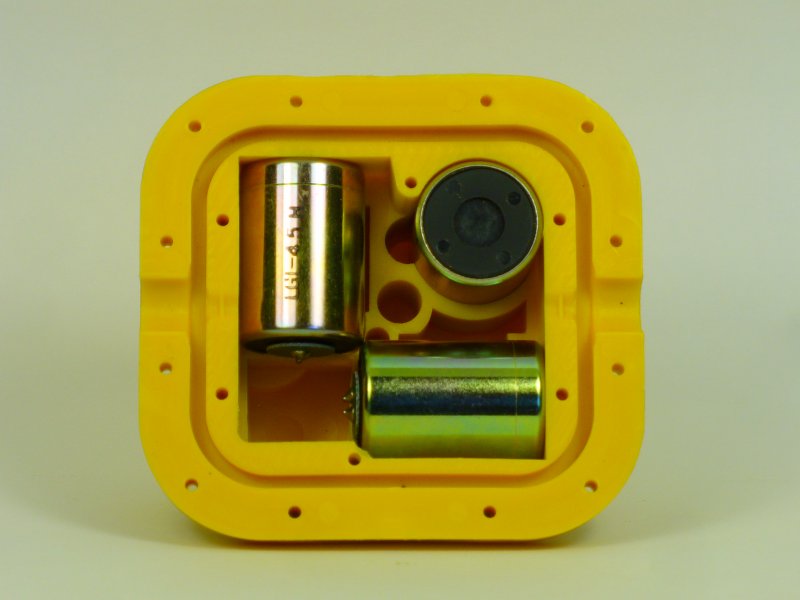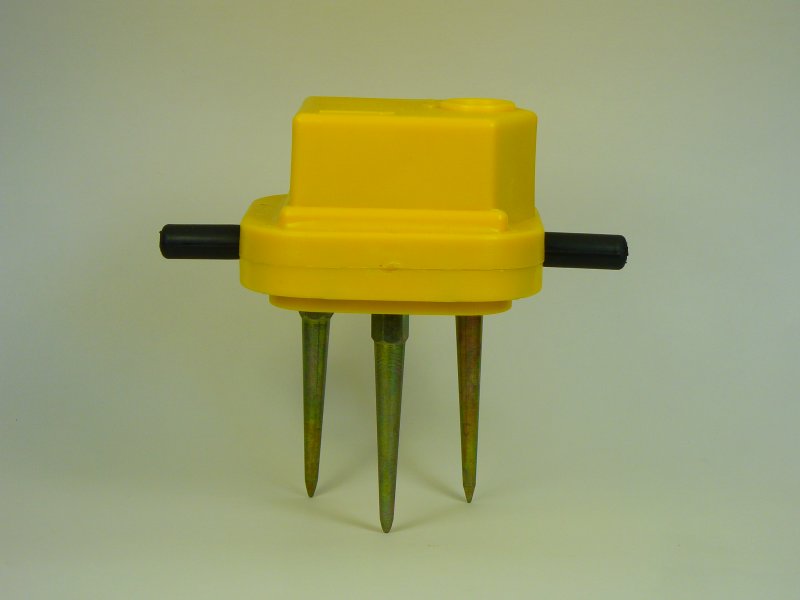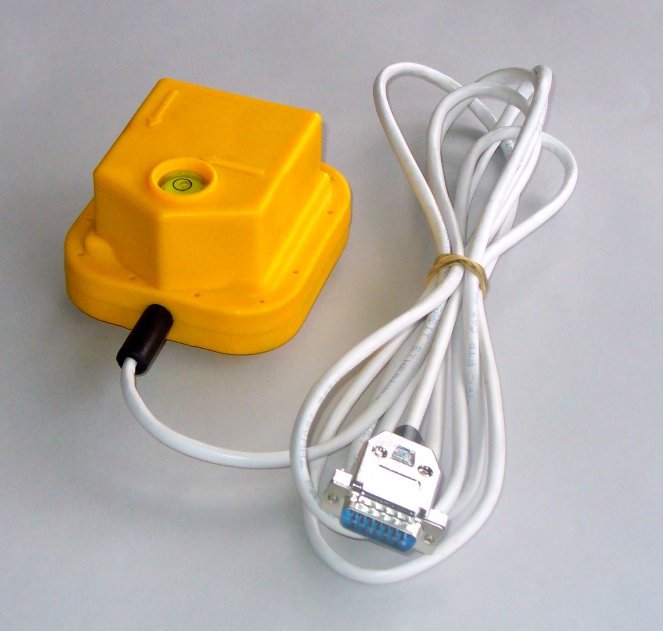

Last Updated: 6/18/2017
New Geophones:
More Information:

These are new 3-component 4.5Hz Geophones made by Baoding Longet Equipments Co., Ltd in China. The datasheet for the LGT sensor can be viewed here. The coil resistance is 375 ohms and has an undamped output voltage of 28.8V/m/s or .731V/in/s. The manufacture does not supply the resistance needed for a damping of .7 and the output voltage at that damping value. We have tested several units and a 14K resistor produces a damping around 70% or .7.
Cost and Availability: $200.00 each for the unwired sensor. Add $40.00 for the wired version. This price includes the three sensor elements, case, spikes and mounting hardware. This item is not in-stock.

Wired Version for PSN-ADC24 Digitizer
Wired Version:
There are two versions of the wire sensor. One is for our single-ended 1 to 4 Channel Amp/Filter and 16 Bit Digitizer boards. This version will come with three 6-foot (~1.8m) shielded audio cables with a molded RCA plug. The other version is for our differential input 24-Bit Digitizer board. For this version we use 10 feet ( ~3 m) of shielded Ethernet Network cable with a standard 2.77mm D-Sub DB-15 male connector soldered to the end of the wire. See photo above. Other lengths of wire are possible. Please contact us for a quotation.
D-Sub DB-15 Connector Pinout for the PSN-ADC24 Digitizer board:
- Pin 1 - Solid Orange Wire = Vertical Sensor Coil + Signal
- Pin 2 - Orange/White Wire = Vertical Sensor Coil - Signal
- Pin 3 - Solid Green Wire = Horizontal Sensor Coil #1 + Signal
- Pin 4 - Green/White Wire = Horizontal Sensor Coil #1 - Signal
- Pin 5 - Solid Blue Wire = Horizontal Sensor Coil #2 + Signal
- Pin 6 - Blue/White Wire = Horizontal Sensor Coil #2 - Signal
- Pin 11 = Ground for Foiled Shielded and Drain wire. Not connected inside the sensor.
The wired version does not come waterproofed. The user will need to do this themselves using some sealant like RTV in both ends of the sensor.
Sensor channel orientation and additional DB15 Pinout information can be found here.
Here are some test measurements performed on one of the Longet LGT 4.5Hz sensor. Of note is the No Load Transducer Gain of the sensor. The manufactures data sheet lists the output at 0.288 V/cm/s and Micheal testing (highlighted in yellow) showed the output to be very close to that number. His testing produced the following output voltages: X=0.287, Y=0.287 and Z=0.277 V/cm/s
If you would like to place an order please see our How to Order Web page.
Recording Earthquake using Geophones:

Geophones, with periods around 1 to 2 Hz, are short period devices designed to record local or large regional events. The higher frequency sensors (4.5 Hz and above) are mainly used for oil and geological studies. Geophones with periods around 4.5 Hz will record local events, see GIF images above, but they are not designed for this purpose. Short period sensors will not record distant (teleseismic) events very well, if at all. Depending on your location they may pick up the P wave of large teleseismic events. If you live in an area where you will only be recording teleseismic events you should not consider using a short period device. To record all of the different waves produced by a teleseismic event you will need a long period device like a Lehman, Shackleford-Gundersen, or broadband sensor. Construction notes on building a vertical broadband sensor can be found here.
More information about geophones can be found here and on Wikipedia.
This page viewed times since March 3, 2001